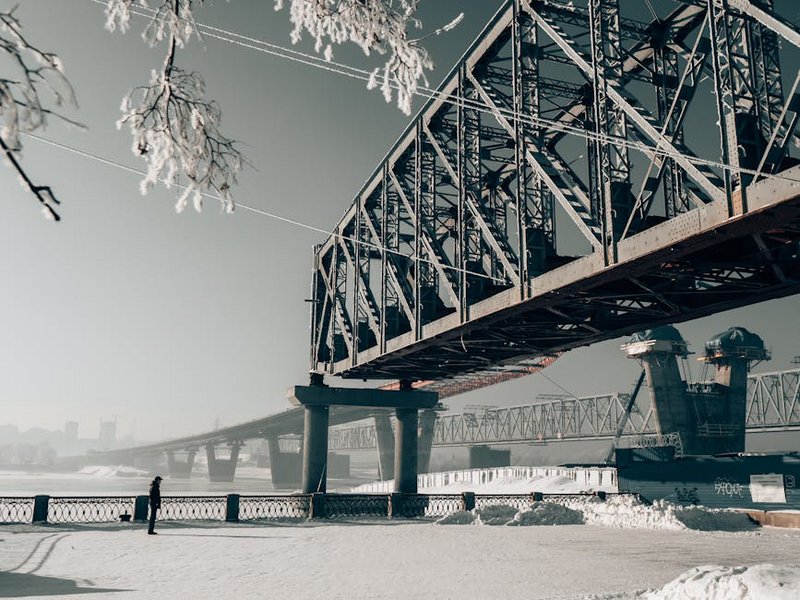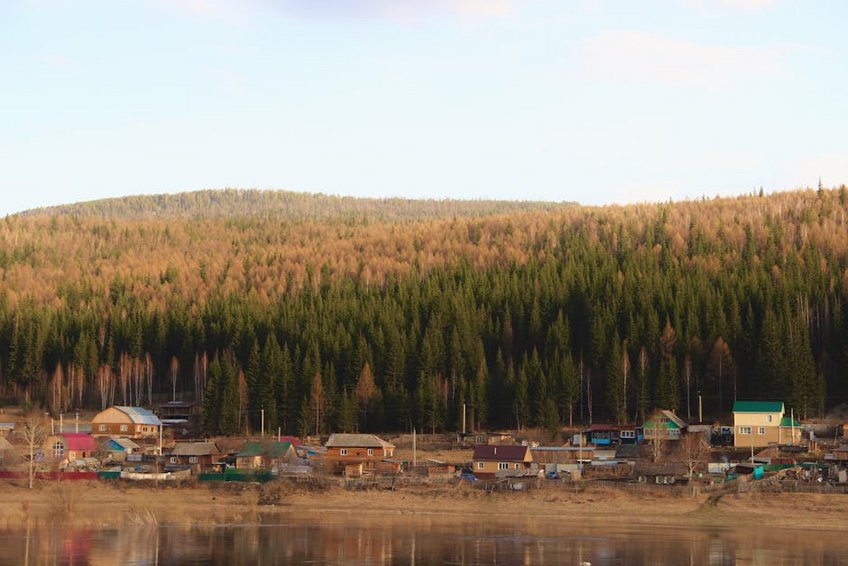Trans Siberian Railway Adventure in Russia
Embarking on a Trans Siberian Railway adventure in Russia is one of the world’s most epic travel experiences, stretching across eight time zones and offering a breathtaking journey through the heart of this vast nation. This legendary rail route connects Moscow with Vladivostok, covering nearly 6,000 miles of diverse landscapes, from the Ural Mountains to the Siberian taiga and the shores of Lake Baikal. For adventure seekers and culture enthusiasts alike, this journey represents the ultimate rail expedition, combining raw natural beauty with rich cultural encounters. Whether you’re traveling in the cozy comfort of first-class or embracing the authentic experience of third-class platzkart, the Trans Siberian Railway adventure promises unforgettable memories and a unique perspective on Russia’s immense scale and diversity. The journey typically takes 6-7 days non-stop, but most travelers break it into segments to explore fascinating cities and natural wonders along the way.
Trans Siberian Railway Adventure Essential Information
Before embarking on your Trans Siberian Railway adventure, understanding the basics will significantly enhance your experience. The railway system actually consists of three main routes: the classic Trans-Siberian (Moscow to Vladivostok), the Trans-Mongolian (Moscow to Beijing via Mongolia), and the Trans-Manchurian (Moscow to Beijing via Manchuria). Each offers distinct cultural and geographical experiences, with the classic route being the longest and most comprehensive Russian experience. The trains operate year-round, with each season offering dramatically different landscapes – from summer’s green expanses to winter’s magical snow-covered scenes. Ticket classes range from basic third-class open compartments to luxurious first-class cabins, with significant price variations. Most trains feature restaurant cars serving Russian cuisine, and stops at major stations allow for quick purchases of local foods from platform vendors.
Route Options and Variations – What You Need to Know
- The classic Trans-Siberian route runs from Moscow to Vladivostok, covering 5,772 miles and taking approximately 6-7 days without stops
- The Trans-Mongolian route diverts south to Ulaanbaatar and Beijing, offering cultural diversity and the Gobi Desert landscape
- The Trans-Manchurian route travels through northeastern China to Beijing, providing a different cultural perspective without entering Mongolia
- Budget travelers can expect to spend $1,500-2,500 for a 3-week journey including third-class tickets, hostel accommodations, and basic meals
- Mid-range travelers should budget $3,000-4,500 for second-class tickets, comfortable hotels, restaurant meals, and guided excursions
- Luxury experiences range from $5,000-8,000+ featuring first-class compartments, premium hotels, private guides, and special experiences
- Russian Railways Official Website
- Lonely Planet Trans-Siberian Railway Guide
Ticket Classes and Accommodation – Key Details
Understanding the accommodation classes is crucial for planning your Trans Siberian Railway adventure. First-class (Spalny Vagon) offers two-berth compartments with comfortable beds, privacy, and sometimes ensuite facilities. Second-class (Kupe) features four-berth compartments that are comfortable and social, ideal for most travelers. Third-class (Platzkart) is open-plan carriage sleeping with 54 beds, offering the most authentic and budget-friendly experience with opportunities to meet locals. Each carriage has a provodnitsa (carriage attendant) who provides bedding, maintains order, and serves tea throughout the journey. The restaurant car varies by train but typically serves Russian staples like borscht, pelmeni, and blini, though many travelers supplement with food purchased at station stops.

Trans Siberian Railway Adventure Planning Your Trip
Proper planning transforms your Trans Siberian Railway adventure from a simple train ride into the journey of a lifetime. Begin by deciding your route and stops – most travelers spend 2-3 weeks to properly experience the journey with meaningful stops along the way. The classic itinerary includes Moscow, Yekaterinburg, Irkutsk (for Lake Baikal), and Vladivostok, though many add Ulan-Ude, Krasnoyarsk, or side trips to Mongolia or China. Booking can be done through Russian Railways website (rzd.ru) or specialized agencies, with prices varying significantly by season and class. Summer (June-August) is peak season with higher prices but pleasant weather, while winter offers dramatic snowy landscapes at lower costs. Travel insurance covering Russia is essential, and visa requirements must be arranged well in advance for most nationalities.
Best Time to Visit for Trans Siberian Railway Adventure
The ideal time for your Trans Siberian Railway adventure depends on your preferences and tolerance for extreme temperatures. Summer (June to August) offers long daylight hours, green landscapes, and comfortable temperatures (15-25°C/59-77°F), making it perfect for side excursions and Lake Baikal swimming. However, this is peak season with higher prices and more tourists. Spring (May) and autumn (September) provide shoulder season advantages with fewer crowds, beautiful fall colors or spring blooms, and moderate prices. Winter (December to February) transforms the landscape into a snow-covered wonderland with temperatures plunging to -30°C/-22°F, offering a truly authentic Russian winter experience but requiring serious cold-weather preparation.
Budget Planning and Costs
Essential Preparation Checklist
Preparation is key for a successful Trans Siberian Railway adventure. Begin by securing your Russian visa 1-2 months in advance, requiring invitation documents and careful form completion. Pack strategically with layers for variable temperatures, comfortable shoes for station explorations, and entertainment for long travel segments. Learn basic Russian phrases – English is not widely spoken outside major cities. Download offline maps and translation apps, and carry multiple payment options as international cards may not work. Prepare a medical kit with essentials as pharmacies may not stock familiar brands. Most importantly, maintain flexibility in your plans as train schedules can change, and some experiences are weather-dependent.
Trans Siberian Railway Adventure Top Attractions and Activities
The Trans Siberian Railway adventure offers countless incredible experiences beyond the train journey itself. Moscow’s Red Square, Kremlin, and spectacular metro system provide a magnificent starting point before boarding your train. Yekaterinburg, in the Ural Mountains, offers fascinating history including the Romanov execution site and the Europe-Asia border monument. Irkutsk serves as the gateway to magnificent Lake Baikal, the world’s deepest freshwater lake where you can hike, swim, or experience traditional banya (sauna). Ulan-Ude features the largest Lenin head statue and access to Buryat culture, while Vladivostok’s harbor bridges and naval history provide a dramatic Pacific conclusion. The journey itself becomes the attraction as you watch Russia’s ever-changing landscape unfold outside your window.
Must-See Highlights
Certain experiences define the Trans Siberian Railway adventure and shouldn’t be missed. Lake Baikal demands at least 2-3 days for proper appreciation – take the Circum-Baikal Railway for stunning shoreline views, visit Olkhon Island for shamanic culture, and try omul fish from local fishermen. In Moscow, beyond the obvious attractions, consider a performance at the Bolshoi Theatre and exploring the Arbat Street markets. The journey through the Ural Mountains provides dramatic scenery, especially around the Chusovaya River area. In Vladivostok, the Russky Island bridge and submarine museum offer unique perspectives on Russia’s Pacific presence. Perhaps most memorable are the spontaneous encounters with fellow travelers and locals, sharing stories over tea in the dining car or during station stops.
Hidden Gems and Local Favorites
Beyond the major stops, the Trans Siberian Railway adventure reveals numerous hidden treasures for those willing to explore. Listvyanka village near Irkutsk offers authentic Siberian experiences including dog sledding in winter and hiking in summer. The wooden architecture of Tomsk, though slightly off the main route, showcases beautiful traditional buildings and a vibrant university town atmosphere. Krasnoyarsk’s Stolby Nature Reserve features spectacular rock formations popular with local climbers and hikers. Smaller stations like Slyudyanka offer mineral markets and access to less-visited Baikal areas. The train itself holds secrets – early morning observations of babushkas selling homemade piroshki at remote stations, or the magical light of Siberia’s white nights in summer create unforgettable moments that don’t appear in any guidebook.
Trans Siberian Railway Adventure Practical Travel Information
Navigating the practical aspects of your Trans Siberian Railway adventure requires some specific knowledge. Russian trains operate on Moscow time for schedules regardless of time zone, so keep careful track of local time for appointments. Station facilities vary greatly – major stations have restaurants and shops while smaller stops may have only basic amenities. Internet access is unreliable outside major cities, so download essential information beforehand. Currency exchange is best done at banks in cities rather than on trains or at stations. Safety is generally good on trains, but standard precautions with valuables are wise. The provodnitsa (carriage attendant) is your key resource for information, hot water, and assistance – learning a few Russian phrases to communicate with them enhances your experience significantly.
| Category | Options/Features | Price Range (USD) |
|---|---|---|
| Train Tickets | Third-class to first-class, varying comfort levels | $500-2,000+ |
| Accommodation | Hostels to luxury hotels at stopovers | $20-200/night |
| Food & Dining | Train meals, station food, restaurant dining | $15-50/day |
| Activities & Tours | Guided excursions, museum entries, special experiences | $20-150/day |


